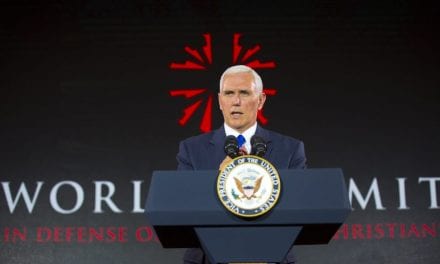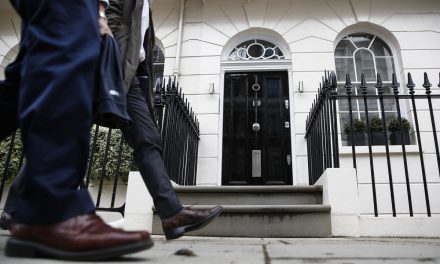BY SETH J. FRANTZMAN, The Hill
Four years ago this month, supporters of the Islamic State attacked a military post called Camp Speicher north of Tikrit in Iraq. The camp was home to thousands of Iraqi air force cadets, many of them Shiites.
The Sunni extremists of ISIS systematically murdered an estimated 1,566 of the cadets in a brutal bloodbath that they filmed and boasted about online. Iraq in 2016 executed some perpetrators of the massacre — a gruesome event that marked a turning point following the Arab Spring, from dreams of a “new Middle East” to nightmares of sectarianism, war and slaughter.
Today, Washington must support its regional allies while struggling to contain the threat of Iranian expansion and sectarian Islamist extremism that grew out of the upheaval.
The Arab Spring, which began in 2010 after a Tunisian street vendor set himself on fire in a protest, is still transforming the Middle East. The result is a strengthening of the ancien regime of Gulf monarchies and the reinforcing of status quo in places such as Lebanon, Syria and Egypt. The second major result has been the rise of Iranian hegemony in the region, and the growing alliance between Israel and several Sunni Arab states who oppose Iran’s growing power.
The Arab Spring bedeviled Washington from the start as it threatened America’s traditional allies such as Egypt’s Hosni Mubarak. The Obama administration sought to ride the wave of changes — intervening in Libya, supporting the mostly Sunni rebels in Syria while negotiating the Joint Comprehensive Plan of Action (JCPOA) with the Iranian regime that backed their enemy in Damascus.
Significantly, President Obama ordered airstrikes on ISIS in August 2014 to help stem the genocide against the Yazidi minority in northern Iraq. Those airstrikes eventually grew into an international coalition to fight ISIS that, with its local partners, remains active in Iraq and has come to dominate eastern Syria. The Trump administration has inherited the aftermath of these policies and seeks to confront Iran while balancing other U.S. interests in the region.
The Arab Spring at the outset essentially was a rebellion against 60 years of ossifying Arab nationalist regimes that had dominated the region since the end of the colonial era. Most of these regimes had been key players in the Cold War and emerged from it grappling with rising Islamist terror and no path to democratization. These included Hosni Mubarak’s Egypt, Zine El Abidine Ben Ali’s Tunisia, Bashar al-Assad’s Syria, Muammar Gaddafi’s Libya, and Ali Abdullah Saleh’s Yemen. Mubarak and Ali stepped down; Gaddafi and Saleh ended up dead. The Assad regime, with help from Iran, Russia and Hezbollah, has held on.
Unlike the Arab nationalists, whose legitimacy was based on fighting colonial-era bogeymen and establishing secular and pseudo-democratic rule, the Arab monarchies all survived the Arab Spring. Only Bahrain was momentarily threatened by protests among its Shiite majority. The Gulf Cooperation Council, led by Saudi Arabia, intervened to prevent the monarchy from being threatened. Jordan also successfully contained the 2011 protests. Other polities such as the Palestinian Authority and Lebanon had already gone through traumatic upheavals in 2005-2006 and didn’t need another one. Like the monarchies, the democracies in the region tended to survive the Arab Spring. Iraq, Lebanon and Turkey all kept their political systems intact.
The Arab Spring quickly became a contest between liberalizing forces and Islamist groups, with sectarianism and authoritarianism hanging in the background. In Egypt, the Muslim Brotherhood came to power in 2012 and was overthrown by the military in 2013. Libya, Yemen and Syria sunk into civil war. Tunisia, where it all began, became a democracy, the lone beneficiary of the hopes and dreams of those who took part in the uprising.
Several forces conspired to exploit the passions of the Arab Spring to forever change the region. Iran and the Islamic State competed for the hearts and minds of increasing sectarian conflicts in Syria, Iraq and elsewhere. Some 40,000 extremists, from around the world, many of them transiting through Turkey to Syria, joined ISIS. Initially they feigned interest in the Syrian rebellion against Assad, before turning to the “caliphate.” For the United States and its Western allies, the rise of ISIS was the premier threat, requiring the assembly of a massive coalition, with help from Kurdish allies in Syria and Iraq, to destroy the extremists.
Today, the wreckage from the uprising has resulted in three clear alliances in the region. Iran, Syria, Shiite political parties and militias in Iraq, Hezbollah in Lebanon, and the Houthi rebels in Yemen make up one Tehran-based axis. This gives Iran a corridor of influence through Iraq and Syria to Lebanon. The second alliance is made up more loosely of the United States, Saudi Arabia, the United Arab Emirates, the Sunni parties in Lebanon, Kurdish groups in Iraq and Syria, Egypt, Jordan and Israel. A third alliance consists of Turkey and Qatar, two countries whose leaders were enthusiastic supporters of the 2011 uprisings and of the Muslim Brotherhood.
The United States wants to manage the aftermath of these upheavals by establishing stability in Iraq and weaning Qatar and Lebanon from their connections to Iran, while cementing traditional allies such as Saudi Arabia and Israel. But the underlying problems of the Arab Spring have not been resolved. That includes lack of youth unemployment in places such as Egypt and demands for representation by Sunni groups in Syria and Iraq.
In the aftermath of the chaos of from 2011 to 2017, the surviving regimes value stability over change. Managing that stability, while continuing to fight extremism and Iran’s drive for hegemony, is the challenge for Washington and its allies.
Seth J. Frantzman spent three years in Iraq and other countries in the region researching the war on terror and Islamic State. He is executive director of the Middle East Center for Reporting and Analysis. A former assistant professor of American Studies at Al-Quds University, he covers the Middle East for The Jerusalem Post and is a writing fellow at the Middle East Forum. He is writing a book on the state of the region after ISIS.



















